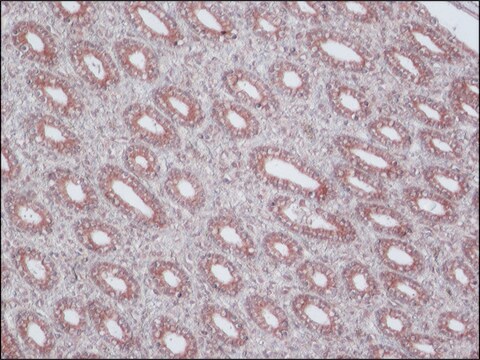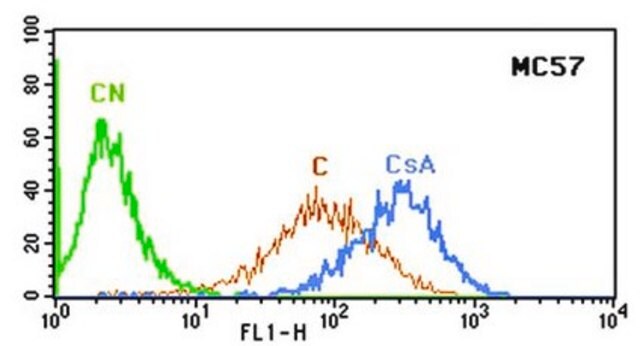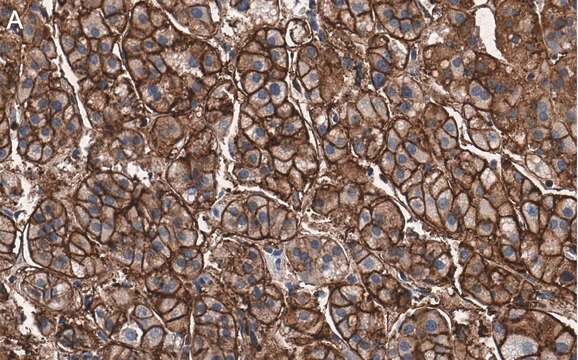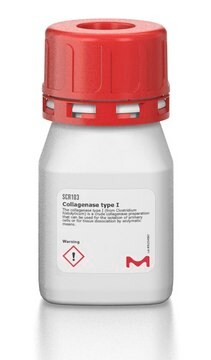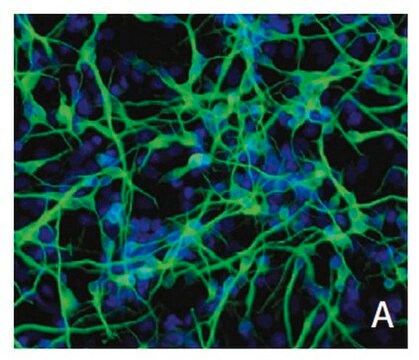MAB4120
Anti-MDR1 Antibody, clone JSB-1
culture supernatant, clone JSB-1, Chemicon®
Synonyme(s) :
P-glycoprotein, CD243, p170, Pgp
About This Item
Produits recommandés
Source biologique
mouse
Niveau de qualité
Forme d'anticorps
culture supernatant
Type de produit anticorps
primary antibodies
Clone
JSB-1, monoclonal
Espèces réactives
human, hamster
Fabricant/nom de marque
Chemicon®
Technique(s)
flow cytometry: suitable
immunocytochemistry: suitable
immunohistochemistry: suitable (paraffin)
western blot: suitable
Isotype
IgG1
Numéro d'accès NCBI
Numéro d'accès UniProt
Conditions d'expédition
wet ice
Informations sur le gène
human ... ABCB1(5243)
Spécificité
JSB-1 does not cross-react with MDR3 P-glycoprotein. JSB-1 has been shown to cross-react with Pyruvate Carboxylase (PC), an abundant Mr 130,000 mitochondrial enzyme, on both immunoblots and immunohistochemical tissue sections [Rao et al. (1995). J Histo. Cytochem. 43(12):1187-1192.] Unequivocal plasma membrane patterns of immunostaining represent true P-glycoprotein ex-presssion. Weak homogeneous, cytoplasmic, or granular patterns of reactivity may represent staining of the PC cross-reactive epitope rather than positive staining for P-glycoprotein.
Immunogène
Application
Immunohistochemistry on frozen and paraffin embedded tissue
sections: 1:20.
Immunocytochemistry: acetone or air-dried preparations react well.
Western blot
Note: For cellular detection, permeabilization is required.
Optimal working dilutions must be determined by end user.
Metabolism
Toxicology & Drug Resistance
Description de la cible
Forme physique
Stockage et stabilité
Remarque sur l'analyse
MDR cells
Autres remarques
Informations légales
Clause de non-responsabilité
Vous ne trouvez pas le bon produit ?
Essayez notre Outil de sélection de produits.
En option
Code de la classe de stockage
12 - Non Combustible Liquids
Classe de danger pour l'eau (WGK)
WGK 1
Point d'éclair (°F)
Not applicable
Point d'éclair (°C)
Not applicable
Certificats d'analyse (COA)
Recherchez un Certificats d'analyse (COA) en saisissant le numéro de lot du produit. Les numéros de lot figurent sur l'étiquette du produit après les mots "Lot" ou "Batch".
Déjà en possession de ce produit ?
Retrouvez la documentation relative aux produits que vous avez récemment achetés dans la Bibliothèque de documents.
Notre équipe de scientifiques dispose d'une expérience dans tous les secteurs de la recherche, notamment en sciences de la vie, science des matériaux, synthèse chimique, chromatographie, analyse et dans de nombreux autres domaines..
Contacter notre Service technique
